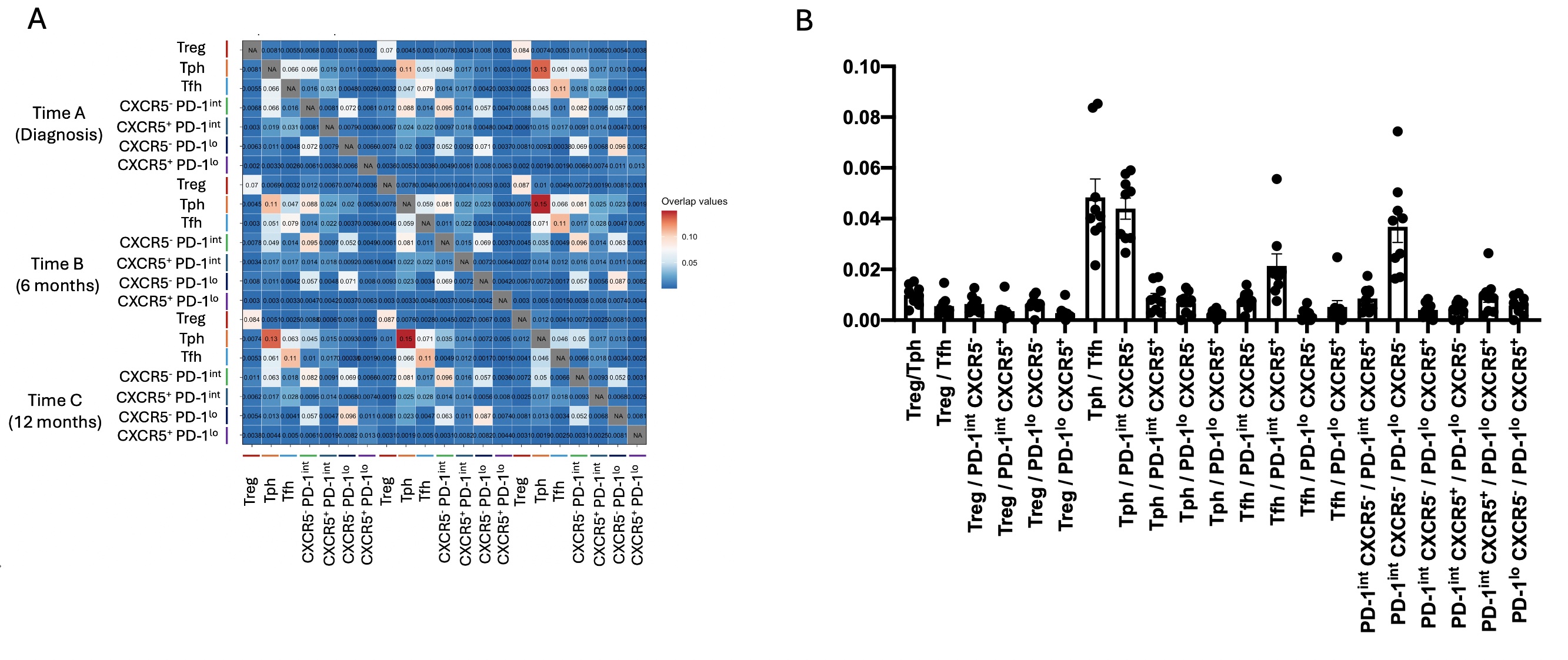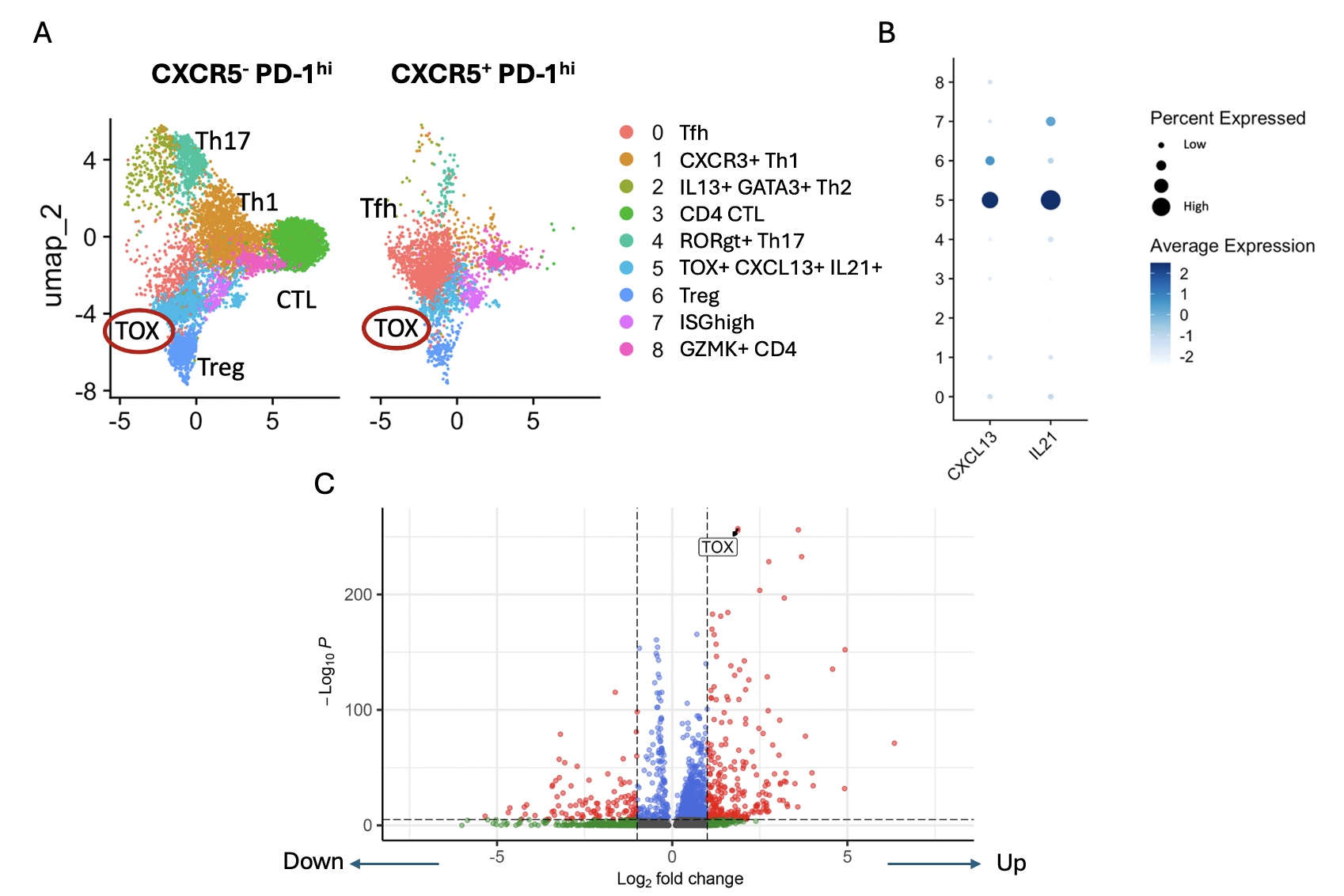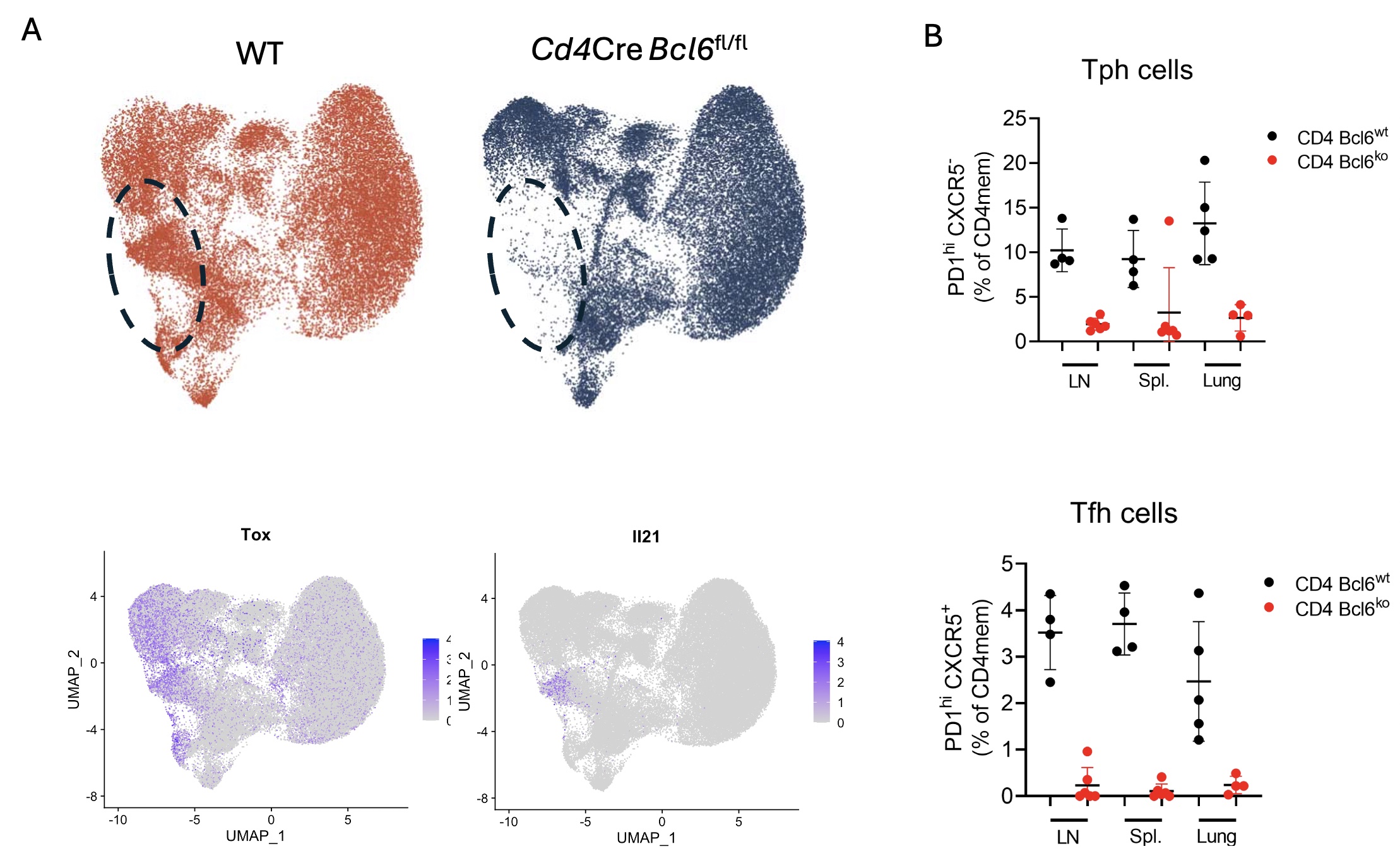Session Information
Date: Monday, November 18, 2024
Title: T Cell Biology & Targets in Autoimmune & Inflammatory Disease Poster
Session Type: Poster Session C
Session Time: 10:30AM-12:30PM
Background/Purpose: T helper cells, including T peripheral helper (Tph) cells and T follicular helper (Tfh) cells, play pivotal roles in promoting B cell activation and autoantibody production in systemic lupus erythematosus (SLE). However, the developmental relationships between Tph and Tfh cells in SLE remain unclear and the extent to which expanded Tph and Tfh cell clones persist over time in SLE patients is unknown. Here we have used T cell receptor (TCR) profiling to track the dynamics and clonal relationships of Tph and Tfh cells in SLE patients and in murine lupus.
Methods: We profiled TCRs of bulk populations of sorted Tph cells, Tfh cells, Tregs, and 4 other comparator CD4 T cell populations from blood of 9 patients with a new diagnosis of SLE, followed across 3 timepoints: diagnosis, 6 months, and 1 year. 10 control donors were analyzed at a single timepoint as well, yielding a total dataset of 498 bulk TCR profiles. We also performed single-cell RNA and TCRseq (scRNA/TCRseq) using samples from 3 of the 9 SLE patients to link TCR characteristics with gene expression features. Additionally, we conducted scRNA/TCRseq of lung and spleen samples from pristane-induced lupus mice at 3 months and 1 year to assess the development of Tph and Tfh cells in this model.
Results: Longitudinal analyses demonstrated a clear persistence of expanded clones over time of Tph and Tfh cells. Analysis of clonal overlap across cell populations demonstrated substantial TCR overlap between Tph and Tfh cells, suggesting a developmental link between these two subsets (Figure 1). scRNAseq of CD4 T cell subsets from SLE patients highlighted specific clusters of TOX+ CXCL13+ IL21+ Tph cells and TOX+ CXCL13+ IL21+ Tfh cells (Figure 2). Repertoire overlap analysis using scTCR data revealed that TOX+ CXCL13+ IL21+ cluster shared TCR repertoires between Tph and Tfh cells, suggesting this cluster may transition between Tph and Tfh states. TCR repertoires of TOX+ CXCL13+ IL21+ cells were consistently observed in the longitudinal TCR data from Tph and Tfh cells. Pseudo-time analysis using the scRNAseq data suggested that Tfh cells may differentiate into Tph cells. scRNAseq from pristane-induced lupus mice revealed Tox+ Il21+ cells robustly expanded in the lungs at 3 months and 1 year. In the spleen, Tox+ Il21+ cluster could be further classified into Pdcd1+ Bcl6+ Cxcr5+ Tfh cluster and Pdcd1+ Cd200+ Il21+ Tph cluster, and these clusters shared TCR repertoires. To evaluate a developmental link between Tph and Tfh cells, we also generated scRNA/TCRseq data from the lungs and spleens of pristane-induced lupus mice in a Cd4Cre Bcl6fl/fl Tfh-deficient strain. As hypothesized, Tfh-deficient mice showed a significant reduction of Tox+ Il21+cluster (Figure 3A). Flow cytometry analysis confirmed that Tph cells were significantly decreased in Cd4Cre Bcl6fl/fl mice, suggesting that Tfh cells are required for the development of Tph cells in this model (Figure 3B).
Conclusion: We found persistent TCR overlap of Tph and Tfh cells across multiple timepoints in early SLE. These findings support a dynamic relationship between Tph and Tfh cells in SLE with likely functional plasticity between these CD4 T cell subsets.
To cite this abstract in AMA style:
Sasaki T, Sowerby J, Xiao Y, Wang R, Lee P, Qu Y, Sze M, Alves S, Levesque M, Costenbader K, Rao D. Clonal Relationships Between Tph and Tfh Cells in Patients with SLE and in Murine Lupus [abstract]. Arthritis Rheumatol. 2024; 76 (suppl 9). https://acrabstracts.org/abstract/clonal-relationships-between-tph-and-tfh-cells-in-patients-with-sle-and-in-murine-lupus/. Accessed .« Back to ACR Convergence 2024
ACR Meeting Abstracts - https://acrabstracts.org/abstract/clonal-relationships-between-tph-and-tfh-cells-in-patients-with-sle-and-in-murine-lupus/



